By: Fireside Games Players: 1-6 Ages: 8+ Time: Up to 30-60 mins
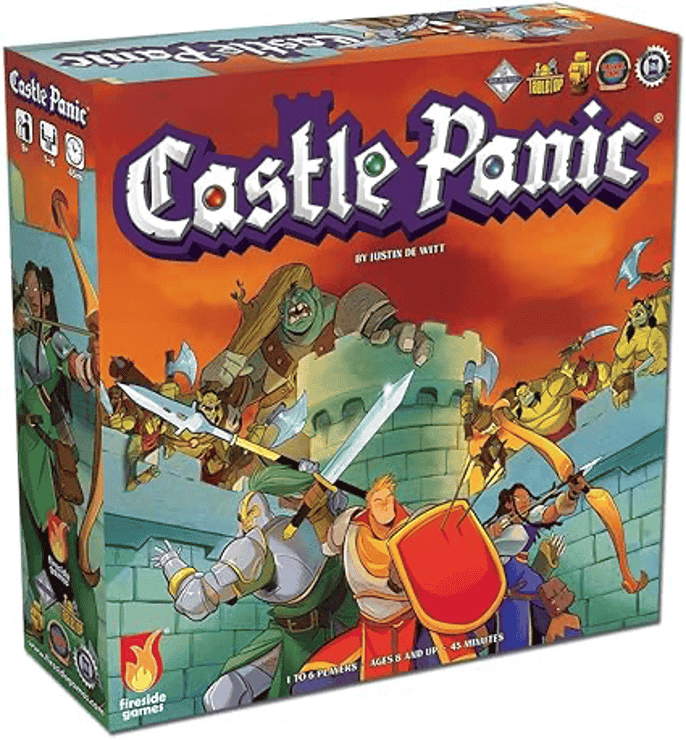
Castle Panic is a cooperative, castle defense board game for one to six players. Lurking in the shadows of the forest, monsters are waiting for their opportunity to strike and storm the castle. It’s down to you and your friends to stop them!
Using strategy and wits, players will need to work together to fend them off with archers, knights, swordsmen and more.
There are almost fifty monsters to dispatch in all! Whoever eliminates the most will be declared the “Master Slayer!”
What Is Castle Panic? A Cooperative Game
Designed in 2009 by Justin De Witt and published by Fireside Games, Castle Panic Board Game is a cooperative tower defense game set in a fantasy kingdom. Players must work together to repel the onslaught of Orcs, Goblins and Trolls trying to overrun the castle. Cards are used to execute actions like slaying monsters, slowing them down, or rebuilding walls. Protecting the castle wall is crucial to prevent the castle from being destroyed by the invading monsters. The monsters will also have various tactics they can implement when storming the castle, but players can swap cards throughout the game to ensure they use the best strategy possible when tackling the many oncoming threats.
The game involves drawing cards from the draw deck, discarding, and trading cards with other players to optimize their hand. Additionally, drawing monster tiles from the draw deck determines enemy movements and actions, adding an element of unpredictability to the game.
Setting Up The Game
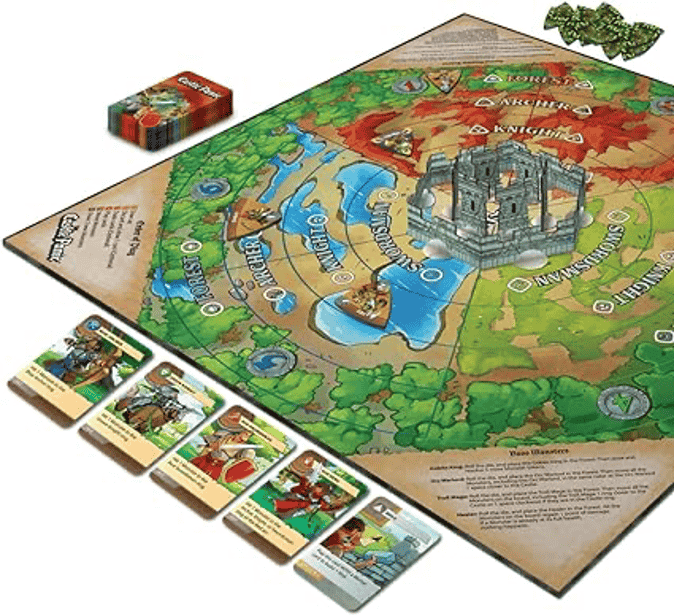
Castle Panic’s game board is made up of a series of rings with the castle that needs defending in the centre. These rings are split into different arcs labelled 1-6 and are one of three colours: red, green, and blue. Of these rings, the outermost is the forest where the monsters start their turn and most of the other rings represent the player’s units, with the central ring being where the castle towers are situated. There are several different ways to play the game, but setup is the same regardless of which you choose.
Monster tiles are used to determine which monsters appear on the board, adding randomness and excitement to the game.
Monsters are represented by triangular tokens that resemble guitar picks and have a number in each of their corners (this represents their remaining health). One monster is placed in the forest in each of the six arcs with the highest numbered corner pointing towards the castle. The 3-d castle is set-up with one tower being placed in each arc of the castle ring and one wall being placed in an arc between the castle and swordsmen’s ring. Everyone is dealt a number of ‘castle cards’ (the number of which depends on the number of players) which will serve as their opening hand. These don’t need to be kept hidden as players will work together to repel the monsters and can trade cards during the game. The rest of the castle cards are placed face down to form a deck for later and the remaining monster tokens are likewise placed face down and set aside.
The goal is to defeat all the monsters before the castle falls.
How to Play Castle Panic Board Game
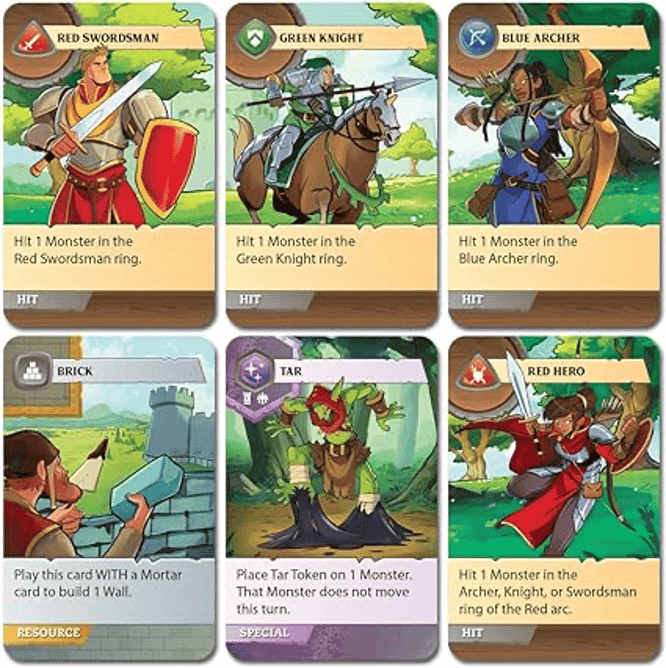
A player’s turn is made up of several actions, some of which are optional whilst others are mandatory. If a player does not have a full hand of cards they start their turn by drawing how many castle cards they need to bring their hand to full. If a player doesn’t like the cards in their hand, they may also discard a card and draw a new one to replace it. Likewise, if a player wishes they can trade a card with another player in order to make their turn more impactful. Playing a few games helps players get a feel for the game and understand these mechanics better.
Players may then play as many cards from their hand as they wish. There are a variety of cards that can be played with the majority being used to attack or slay monsters. Other cards, for example, can be used to rebuild walls or slow monsters advance down with tar. When attacking or slaying a monster, a card must be played that matches the ring and arc the monster is currently situated in. Eg. If a goblin was in the archer ring and the red arc, a player could play a red arc to attack it. Monsters cannot be attacked in the forest but more or less anything else is fair game. When a monster is attacked, they take one point of damage and their token is rotated to show a reduction in their health points. When all of a monsters health points are gone they have been ‘slayed’ and whoever dealt the killing blow receives the token as a trophy.
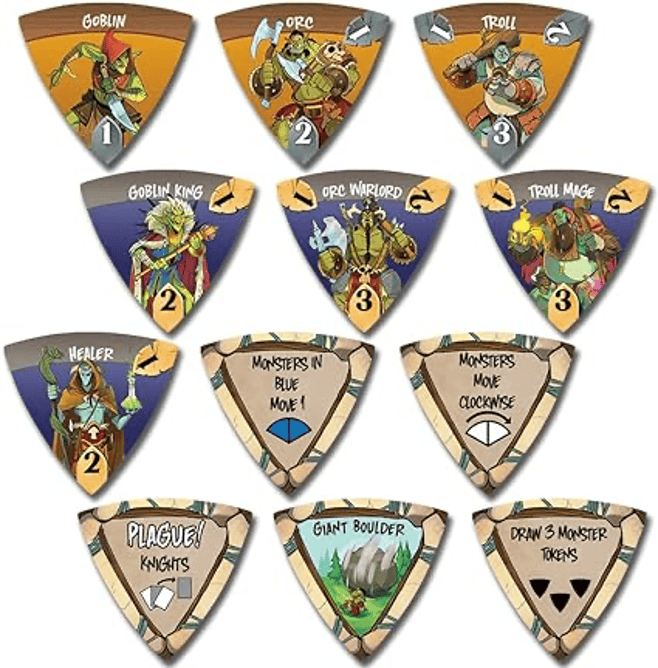
If there are any monsters left on the board they now move one space towards the castle, or one space clockwise if they are within the castle ring. Walls and towers are destroyed when a monster approaches them. Moving close enough will immediately destroy the player’s defenses but the monster will also take one point of damage. Two new tokens are then drawn from the monster pile. A roll of the dice determines which space the monster starts in, with more than one being able to occupy the same area. There are a handful of boss monsters in the game, who if drawn have special effects. Monster effect tokens may also be drawn and although these aren’t played on the board they have an effect that is imposed on either the player or monsters.
Play continues in this fashion until either the last tower is destroyed or all monsters are slain. If the players are able to defeat the monsters they then add the number of victory points together for each monster they have slain. The player with the most points is declared the master slayer!
Once the game gets going, gameplay progresses fluidly and players will find the mechanics quite straightforward. The trick to overcoming the evil hordes is understanding how to strategize and utilize teamwork. Whilst the game isn’t as technical as some, there are still plenty of moments throughout a game where players will need to deliberate and work together in order to make the most of each players turn. Understanding what cards are most important, knowing when to trade cards, and predicting what may happen when the monster tokens are flipped, are all important factors. Whilst there is an element of chance in each game, being adaptable and resilient, as well as having a plan A and B that everyone agrees upon, is critical in order to achieve victory for the team. The dynamics and intensity of the first game played can set the tone for future sessions, making it an exciting experience for new players.
Expansions: Wizard’s Tower Expansion
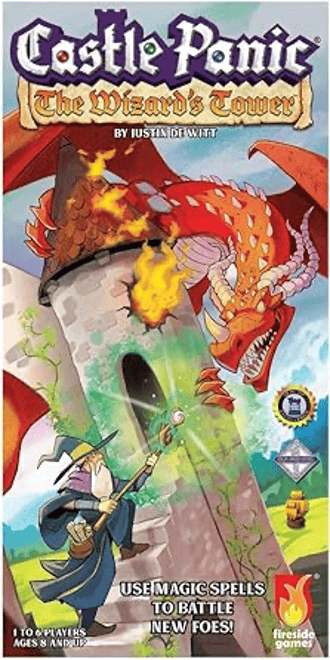
If players enjoy the base game enough, there are a handful of expansions out there that will add to the gameplay experience. Playing Castle Panic with different expansions can offer a variety of new challenges and strategies. These will add new buildings, castle cards, and plenty of new enemies to face on the field of battle. My personal favorite is the Wizards Tower. It comes with spells that the wizard can cast and a little 3-d tower as well.
Summary
Strategy and luck combined
Easy to learn rules
Lots of well constructed components
Solo or co-op gameplay
Plenty of expansions to enrich experience
Enjoyment of board games as part of the appeal
Final Verdict

Castle Panic is a great game to play both with friends as well as on your own. It blends an even measure of luck and strategy together into a fun tactical game that won’t take the whole afternoon to play through. It encourages teamwork as everyone wins or loses together, but does have a small element of competitiveness also through the victory point system. Simple to learn, enjoyable to play through, multiple ways to play, and great looking components, it’s a great thematic game that everyone should try at least once. Castle Panic is also a fantastic choice for a family-friendly game night, offering various expansions and options to adjust the difficulty and player experience for a more engaging and strategic game night.
If You Liked This:
We recommend Castle Panic on our best board games for 9 year olds. Check out our list for more recommendations.
If you enjoyed Castle Panic, below are some similar games that we think you’ll like just as much. Castle Panic is also a great introduction to cooperative games for younger kids, as they can easily grasp the rules, enjoy the cooperative gameplay, and find the game engaging due to the luck factor and variety of monsters:
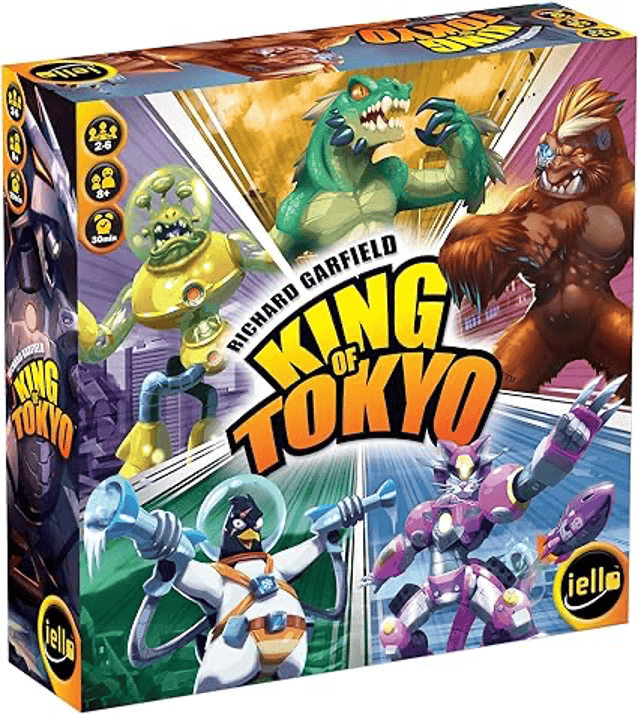
King of Tokyo: Become a Kaiju and battle over oversized monsters to claim dominion over destroy everyone else and reign supreme.
Pandemic: Take on one of several specialist roles and work together to stop the spread of various diseases. Trek the globe and build relief stations whilst trying to eradicate four different diseases before it’s too late.
Heroquest: Take on the role of one of several adventurers and brave the dungeons that await you. Encountering monsters and winning treasure, you can play a single mission or almost a dozen in an ongoing campaign as you watch your hero grow in strength.
Smash Up: A card game where players build a deck from two different factions and fight over bases to gain victory points. Easy to learn and quick to play but the dozens of different expansions will keep you coming back for more.
Betrayal At House On The Hill: Work together to investigate strange goings-on whilst navigating the perilous rooms of the mansion, all while trying to figure out which one of your companions is actually a traitor.
Frequently Asked Questions (FAQ)
Q: How many players can play Castle Panic?
A: Castle Panic Board Game can be played by 1 to 6 players. The game scales well with the number of participants, offering a solo experience as well as a fully cooperative one. Many who have played Castle Panic over the years have enjoyed revisiting it to see if it still holds their attention.
Q: How long does a typical game of Castle Panic take?
A: A typical game of Castle Panic lasts about 45 to 60 minutes. The time can vary depending on the number of players and familiarity with the game rules.
Q: Is Castle Panic suitable for children?
A: Yes, Castle Panic is suitable for children aged 8 and up. The game’s rules are simple to learn and understand, making it a great choice for family game nights. Many parents have highlighted its kid-friendly nature in their My First Castle Panic Review, emphasizing its accessibility to young kids.
Q: Do expansions require the base game to play?
A: Yes, all expansions for Castle Panic require the base game to play. They enhance and add new elements but rely on the core mechanics of the original set.
Q: Can Castle Panic be played as a purely competitive game?
A: While Castle Panic is primarily a cooperative game, the victory points system adds a layer of competition. Players can compete to be the “master slayer” by accruing the most points, but the main objective remains defeating the monsters as a team.
Q: Are there any other games similar to Castle Panic?
A: Yes, if you enjoy Castle Panic, you might also like games such as King of Tokyo, Pandemic, Heroquest, Smash Up, and Betrayal At House On The Hill. These games feature strategy, cooperative play, or similar thematic elements.
